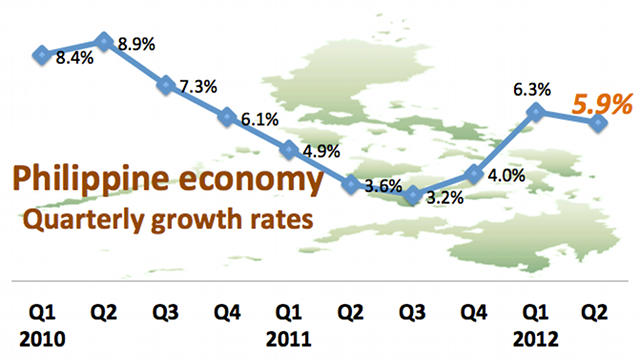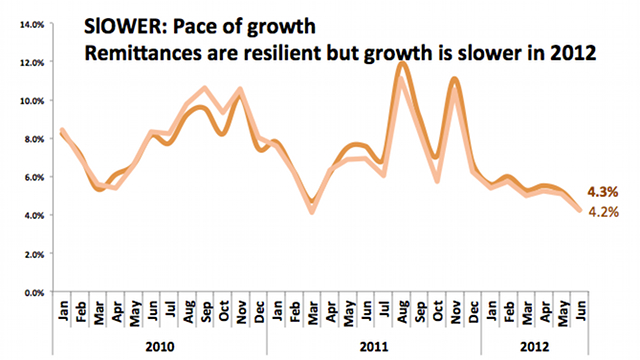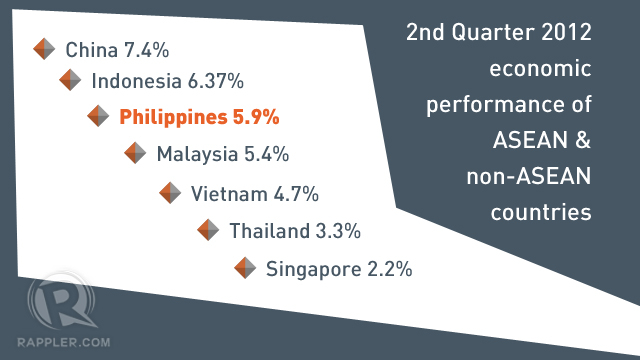
Along with him, others making up the 40 richest list showed the collective wealth of $55 billion which went up by 22 per cent from $45 billion in the previous year, according to Forbes Magazine.
"For the second year in a row, Thailand's richest people have done remarkably well, seeing a more than 20 per cent rise in their collective wealth. Some of the country's top business
leaders have also dominated the headlines with their expansion plans in Southeast Asia and beyond," the magazine said.
No. 3 on the list, Charoen Sirivadhanabhakdi, whose company - Thai Beverage, the country's largest brewer and distiller - has been aggressively bidding for Asia Pacific Breweries. His net worth went up by $1.4 billion to $6.2 billion this year.
Others are looking to take on international rivals on the strength of an expected 6 per cent growth in the Thai economy this year, lower taxes and a firm stock market. Those expanding abroad include Kraisorn Chansiri (No. 25, $545 million), whose Thai Union Frozen Products is on a foreign-acquisition spree, and Aloke Lohia (No. 8, $1.6 billion), who is starting one of thefirst polyethylene terephthalate businesses in Africa.
Dhanin Chearavanont retains his top spot as the country's wealthiest. The leader at the helm of agribusiness conglomerate, Charoen Pokphand Group, boasts an estimated net worth of $9 billion, up $1.6 billion from last year. Over the past year, the stock price of the world's third-biggest operator of 7-Eleven stores, CP All, grew 27 per cent, while his food producers, Charoen Pokphand Foods and PT Charoen Pokphand, also fared well.
The Chirathivat family saw its fortune increase by 60 per cent to $6.9 billion as they moved up two places to No. 2. The descendants of Central Group's late founder, Tiang Chirathivat, share a fortune which is largely derived from their ownership of Central Retail and Central Pattana.
Medical tourism added two new comers to the list: Chalerm Harnphanich (No. 33), who created a $285 million fortune with his Bangkok Chain Hospital, and Wichai Thongtang (No. 20), who saw his net worth climb to $670 million following the merger of his Phyathai Hospital Group with Bangkok Dusit Medical in 2011.
The 50 per cent uptick in shares of Bangkok Dusit Medical Services also added to the fortunes of 2 other listees, Prasert Prasarttong-Osoth (No. 9, $1.2 billion), and Pongsak Viddayakorn (No. 27, $400 million).
This year's list includes two returnees: Phornthep Phornprapha & family (No. 17), who own the Siam Motors conglomerate, have an estimated fortune of $900 million, and Paiboon Damrongchaitham (No. 40) with a wealth of $200 million. Dubai-based Thaksin Shinawatra, the former premier and brother to Prime Minister Yingluck Shinawatra, ranks number 23 on the list with wealth of $600 million.
The list was compiled using shareholding and financial information obtained from the families and individuals, stock exchanges, analysts and Thailand regulatory agencies. Public fortunes were calculated based on stock prices and exchange rates as of Aug 20. Private companies were valued based on similar companies that are publicly traded.
The minimum net worth needed to make this year's list was $200 million.
The top 40 richest in Thailand are:
1) Dhanin Chearavanont; US$9 billion
2) Chirathivat family; $6.9 billion
3) Charoen Sirivadhanabhakdi; $6.2 billion
4) Yoovidya family; $5.4 billion
5) Krit Ratanarak; $3.1 billion
6) Chamnong Bhirombhakdi & family; $2.4 billion
7) Vichai Maleenont & family; $1.8 billion
8) Aloke Lohia; $1.6 billion
9) Prasert Prasarttong-Osoth; $1.2 billion
10) Vanich Chaiyawan; $1.16 billion
11) Thongma Vijitpongpun, $1.1 billion
12) Isara Vongkusolkit & family, $1 billion
13) Boonchai Bencharongkul, $990 million
14) Praneetsilpa Vacharapol, $950 million
15) Surang Prempree, $930 million
16) Prayudh Mahagitsiri, $915 million
17) Phornthep Phornprapha & family, $900 million
18) Anant Asavabhokin, $840 million
19) Keeree Kanjanapas, $810 million
20) Wichai Thongtang, $670 million
21) Sunsurn Jurangkool & family, $650 million
22) Somporn Juangroongruangkit, $610 million
23) Thaksin Shinawatra & family, $600 million
24) William E. Heinecke, $560 million
25) Kraisorn Chansiri, $545 million
26) Chamroon Chiinthammit & family, $500 million
27) Pongsak Viddayakorn, $400 million
28) Nishita Shah Federbush & family, $350 million
29) Worawit Weeraborwornpong, $310 million
30) Vicha Poolvaraluck, $305 million
31) Prateep Tangmatitham, $300 million
32) Pete Bodharamik, $295 million
33) Chalerm Harnphanich, $285 million
34) Niti Osathanugrah, $280 million
35) Roongroj Saengsastra & family, $260 million
36) Chalerm Yoovidhya, $250 million
37) Vichai Raksri-aksorn, $240 million
38) Porndee Leeissaranukul & family, $235 million
39) Prachai Leophairatana & family, $225 million
40) Paiboon Damrongchaitham, $200 million
-Asia News Network (August 30, 2012)




















